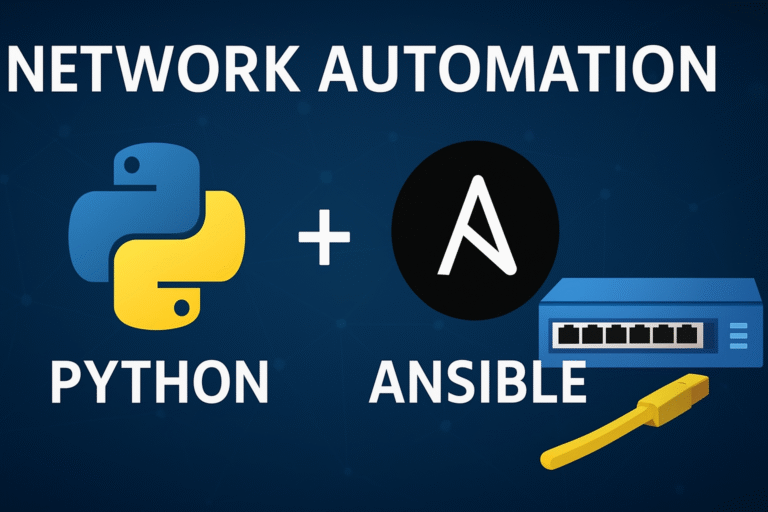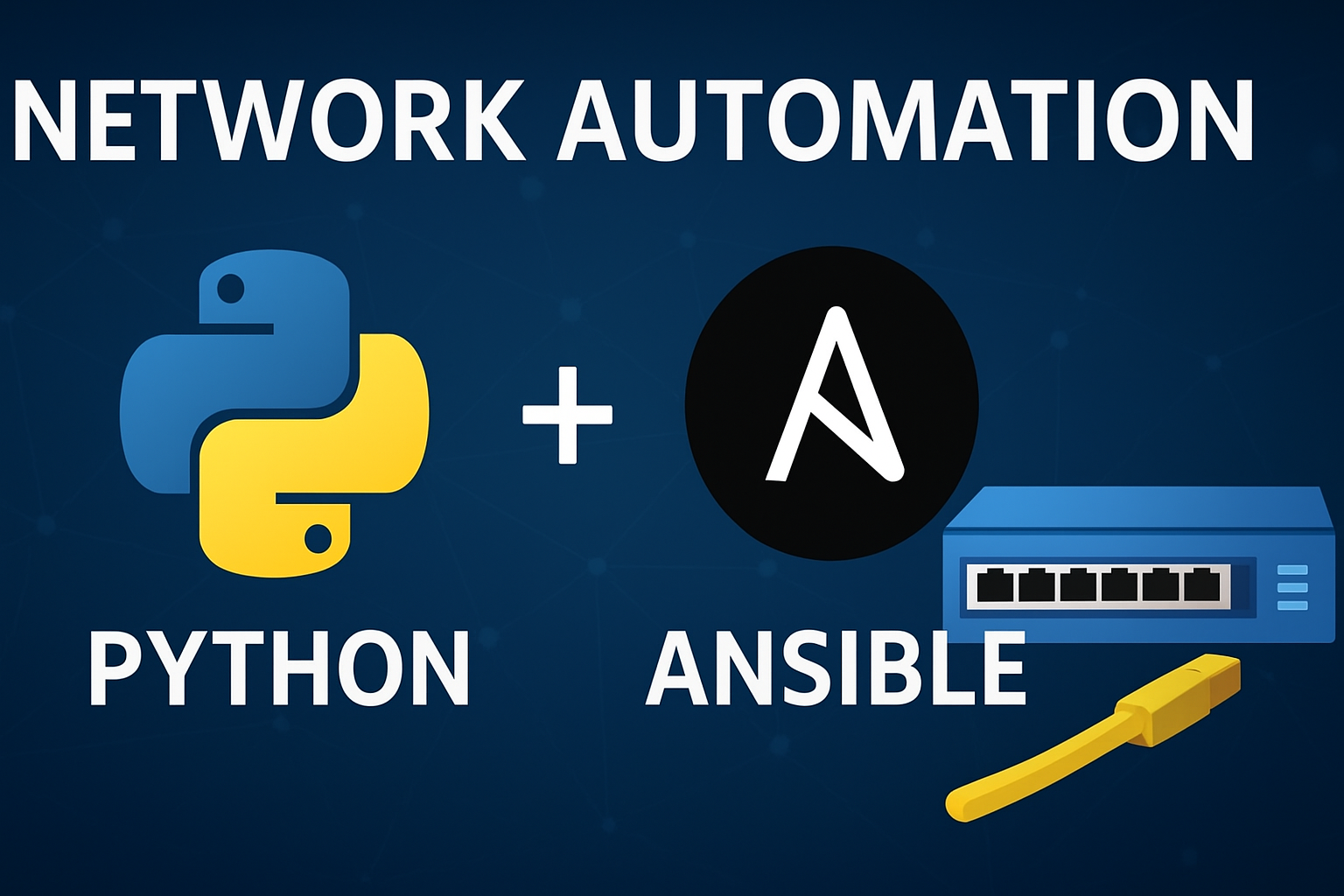OUR TOP courses

About Course
Course Overview
Python Automation Course for Network Engineers: Streamline Your Network Management
Step into the future of network management with our Python Automation Course for Network Engineers! This course is tailored specifically for networking professionals who want to automate repetitive tasks, improve efficiency, and simplify complex network operations. Learn how to use Python to automate everything from device configurations to real-time monitoring, saving valuable time and reducing human error.
Why Take This Course?
- Network-Focused: Designed specifically for network engineers with practical use cases.
- Simplified Learning: No prior programming knowledge required; we start from scratch!
- Hands-On Labs: Real-world automation tasks using Python and popular networking tools.
- Career Growth: Automation is the future; stay ahead of the curve.
- Expert Trainers: Learn from experienced network automation specialists.
Who Should Enroll?
- Network engineers looking to learn Python for automation.
- IT professionals aiming to simplify network management tasks.
- Students preparing for roles in DevNet or Network Automation Engineering.
Why Python Automation is a Game-Changer?
Manual configurations and troubleshooting are time-consuming and prone to errors. Python allows you to automate these tasks efficiently, providing consistency and scalability. In today’s networking world, automation is no longer optional—it’s essential for handling modern, dynamic networks.
🧠 Python Network Automation – Full Syllabus
📍 Module 1: Introduction to Python for Network Engineers
-
What is Network Automation?
-
Why Python for Network Automation?
-
Installing Python & setting up the environment
-
Using Jupyter Notebook, VS Code
-
Python interpreters and version management (pyenv, virtualenv)
🧮 Module 2: Python Basics (Foundation)
-
Variables, Data Types (Strings, Lists, Tuples, Dictionaries, Sets)
-
Conditional Statements (if, elif, else)
-
Loops (for, while)
-
Functions & Lambda Expressions
-
Exception Handling
-
File I/O (Reading & Writing Config Files)
📦 Module 3: Working with Python Libraries
-
OS & Sys – for system interaction
-
JSON & YAML – reading/writing configuration formats
-
Datetime & Logging – for timestamping logs
-
Subprocess – executing shell commands
🔌 Module 4: Network-Specific Libraries
-
Netmiko – SSH connections to network devices
-
Paramiko – advanced SSH library
-
Napalm – multi-vendor configuration management
-
Telnetlib – Telnet session management
-
TextFSM – parsing command outputs
📡 Module 5: APIs and Network Devices
-
Basics of REST APIs (GET, POST, PUT, DELETE)
-
Using Python’s
requestslibrary -
Introduction to Cisco’s RESTCONF and NETCONF
-
Authentication with APIs (Token, Basic Auth)
-
Using Postman & Python to test APIs
-
Parsing JSON and XML responses
🧰 Module 6: Automation Tools
-
Introduction to Ansible for network automation
-
YAML and Playbooks
-
Inventory files and dynamic inventory
-
Automating configuration tasks with Ansible
-
Jinja2 templates for device configuration
🧪 Module 7: Real-Time Use Cases and Projects
-
SSH into multiple devices and collect outputs
-
Automate VLAN creation on Cisco switches
-
Backup and restore configurations
-
Interface status and health monitoring
-
Automate OSPF/EIGRP configuration using Netmiko/NAPALM
-
Automate port-security policies
-
Cisco Device Inventory Tracker (via SNMP or API)
-
Configuration Compliance Checker
🧠 Module 8: Advanced Concepts
-
Introduction to Multithreading / Multiprocessing
-
Event-driven automation with Python asyncio
-
Working with SNMP using
pysnmp -
Scheduling automation tasks (cron, sched, APScheduler)
🌐 Module 9: Version Control & CI/CD
-
Git & GitHub basics
-
Working with branches, pull requests
-
Integrating Python scripts with GitLab CI/CD or GitHub Actions
-
Introduction to Docker (Optional but helpful)
📈 Module 10: Final Projects & Capstone
-
Full network automation script (multivendor)
-
Real-time API monitoring dashboard
-
Automate daily config backup & alerts
-
Integration with monitoring tools like Grafana or Elastic Stack (optional)
📚 Bonus Topics (Optional)
-
Introduction to Python Flask for creating simple dashboards
-
Creating a chatbot for network support using Python
-
Cisco DNA Center & SD-WAN APIs overview
-
ChatGPT API for intelligent automation
Testimonials
- This course made Python so easy to understand, even for a non-programmer like me. I’m automating tasks every day now!” – Rajesh Khanna
- The practical examples and step-by-step guidance helped me start automating my network immediately. A must for network engineers!” – Sneha Agarwal
Enroll Now
Don’t let manual tasks slow you down. Enroll Now to start your journey into network automation and transform your career.
Simplify, Automate, and Innovate with Python for Network Engineers!
Course Content
-
What is Network Automation?
-
Why Python for Network Automation?
-
Installing Python & setting up the environment
-
Using Jupyter Notebook, VS Code
-
Python interpreters and version management (pyenv, virtualenv)





